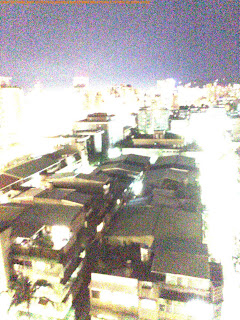All you need is a new iPhone and the latest incarnation of image intensifier apps
Night vision image intensifiers are used by the military to view objects in total darkness by amplifying a few photons. Now declassified technology, one can pick up a new or surplus image tube intensifier for several hundred or a few thousand USA dollars. But why do that when you can get a free phone app to do the same.
Now enter into the year 2020 where you can find almost anything in the form of a free app for your iPhone. MilkyCam is that app. It amplifies a totally dark sky, turning it into daylight by boosting the ISO by thousands of times. For this experiment, I tried three similar apps, each with slightly different features. The goal of this experiment is to determine the amount and direction of light pollution remaining at night during the darkest sky.
Taiwan Study
This study will determine nighttime sources of light pollution using an image intensifier app for a new Apple iPhone in the Taipei Taiwan area. The photos are shot with a handheld iPhone Xs Max and the app MILKYCAM set to the extremely fast ISO rating of 1,856. All photos have no processing. The image intensifier app is so powerful, it can take these images from a night view, to full daytime, and complete whiteout appearances. Aside from studying nighttime light pollution, the intensification app is also used for determining an analysis of clouds during the night, and spot checking the position of stars and celestial objects. Processing can remove grain and light pollution and the app can control the size of stars in the image. Pinpoint stars may disappear against the background photo noise and grain, but a slight enlargement of star diameter will bring stars into better visibility.
Photo 1 has a large parking skyscraper with large picture windows, illuminated from the inside out on every floor day and night. At the right, is a long stretch of road with an array of street lights that shine upward and down. The background skyline also has skyscrapers blazing with lights.
Photo 2 shows buildings fully illuminated from street lights and lights placed on the buildings that shine up and outwards. The only dark patches are from rooftops and a few scattered trees. The tall skyscrapers are fully illuminated from bottom to top. Every hallway has a window with light. In the first tall skyscraper, at least 12 of these windows are contributing the full illumination of the skyscraper and its surroundings. At the top are very intense lights continuously on, radiating in all directions. Adding more to the light pollution, the building balconies are all illuminated.
Photo 3 shows a tall new skyscraper under construction, and contributing the most to the light pollution problem. Other completed buildings are nearly as bad in light radiation. To the right is sky glow as it points towards the heart of downtown.





